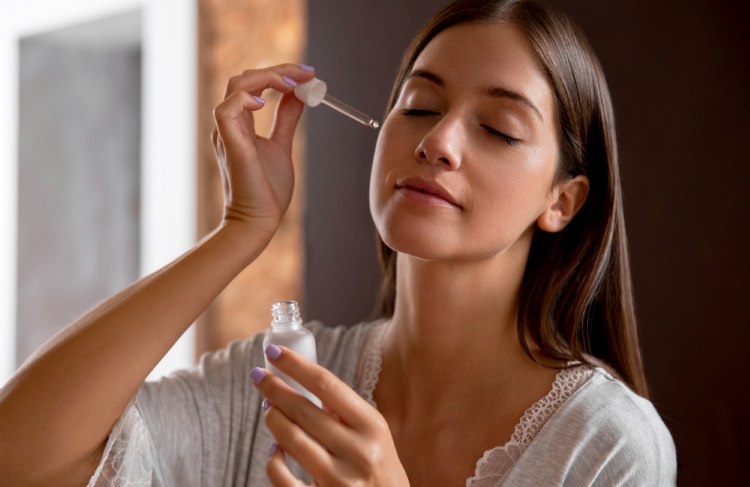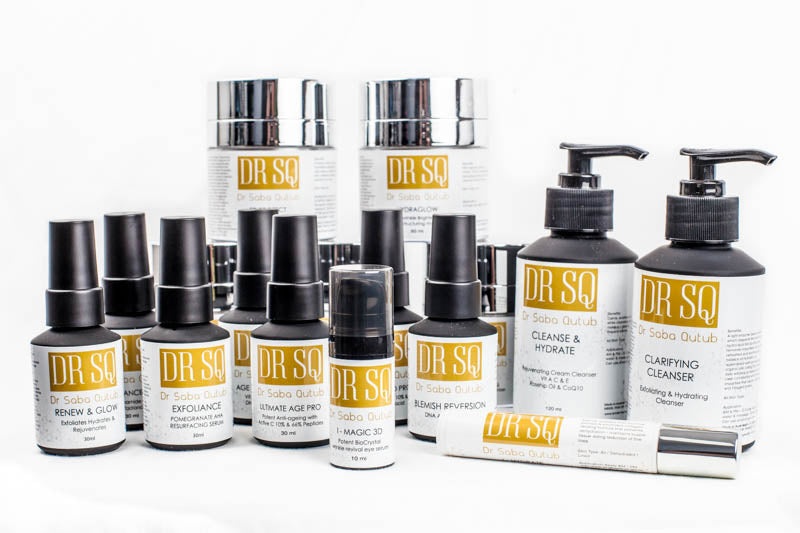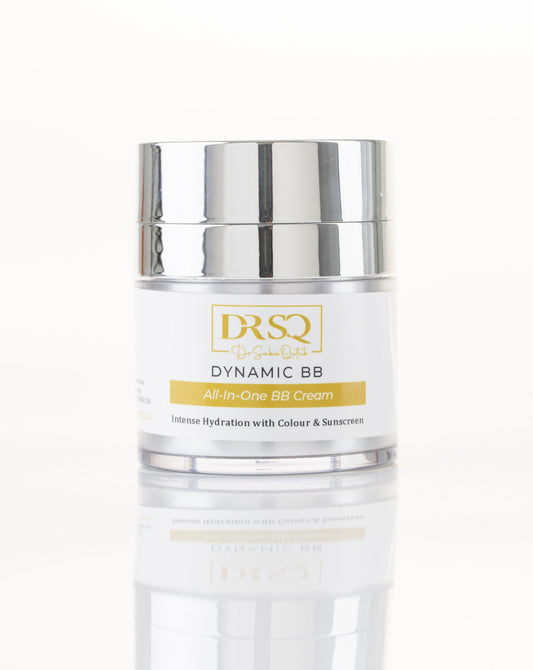How’s Retinaldehyde Different From Tretinoin?

Retinaldehyde and tretinoin, along with other vitamin A derivatives, belong to a class of compounds called retinoids. Whether it’s targeting frown lines, smile lines, or relieving adolescent acne, retinaldehyde and tretinoin are often considered. However, while they share a common origin, they are not created equal.
This blog will break down the key differences between retinaldehyde and tretinoin, so we can get to know which one to use and when.
Retinaldehyde & Its Benefits
Retinaldehyde is one of the recently popular vitamin A derivatives that share similar properties to retinol. But it is milder and more potent than retinol – the reason behind its growing fame among skincare enthusiasts. It is a safe option for sensitive skin, reactive skin, and retinoid beginners.
Here are the notable advantages of retinaldehyde;
- It can vanish your signs of ageing, be they premature, photo-induced, or natural skin ageing. Retinaldehyde can increase the cellular turnover in the skin and boost collagen production.
- Individuals struggling with post-acne hyperpigmentation, dark spots, and other marks can find retinaldehyde helpful. It does so by restricting the activity of an enzyme responsible for melanin production, tyrosinase.
- Retinaldehyde can show significant differences in different types of acne. Moreover, it can also aid acne-scarring and manage oil production.
Tretinoin & Its Benefits
Commonly sold under the brand name Retin-A, tretinoin is a vitamin A derivative available only in prescription form. Also known as all-trans retinoic acid, it can also encourage cellular turnover. Tretinoin can be found in 0.05% lotion and solution, 0.1%, 0.05%, and 0.025% cream, and 0.01%, 0.1%, 0.08%, and 0.05% in gel.
Topical tretinoin can improve aged-appearing skin. Tretinoin is not as common as other forms of vitamin A, but it has been a proven treatment for the following for decades;
- Healing cystic acne and can treat both inflammatory and non-inflammatory acne
- Unclogging pores
- Gently exfoliating the skin
- Improving fine lines and wrinkles, and photoageing
- Hydrating the skin and helping with a rough texture
Retinaldehyde Vs Tretinoin: Key Differences
- Retinaldehyde takes only one step to get converted into retinoic acid, an active form; thus, you can expect faster results with consistent use. But tretinoin is faster, it is already an active form, retinoic acid, thus requires no conversion to start acting on the concern.
- Available in both over-the-counter and prescription forms, retinaldehyde is available in different strengths. While tretinoin can be obtained with a doctor’s prescription only.
- Retinaldehyde or retinal is more potent than retinol, but tretinoin is even more potent than both of these.

- People struggling with severe acne can be prescribed tretinoin. It also helps with widely spread stubborn pigmentation, along with showing positive results in fighting ageing signs. It can regulate sebum production, hence recommended for oily skin. Whereas retinaldehyde can produce noticeable improvement in signs of ageing, moderate acne, and sensitive skin concerns.
- While retinaldehyde is a gentle form, tretinoin can be a little harsh on the skin, especially if you are newly introduced to the ingredient.
Also Read: Adapalene Vs Tretinoin: Comparing Them for Wrinkles, Uses, and Side Effects
Tretinoin or Retinal: Which One Should You Use?
It might confuse you to choose between tretinoin and retinaldehyde with so many available options and considerations. But if you are aware of your concern, skin type, and sensitivity, you can make an informed decision. Retinaldehyde can favour sensitive skin as it is mild, and tretinoin can be harsher. But for targeted treatments, tretinoin can achieve desirable results.
Moreover, retinaldehyde is easily available in different strengths and does not have any major side effects. If you are to choose for combating ageing, retinaldehyde can be a better choice. But it’s best to consult your doctor for suitable advice and avoid potential risks.
Having said that, tretinoin works effectively for fighting ageing and acne problems. It acts directly as retinoic acid and can help with the skin's texture within a few months.
Is Tretinoin Better Than Retinaldehyde?
Both ingredients have their areas of expertise. No one is better than the other. When it comes to dealing with acne and hyperpigmentation, tretinoin can be preferred. On the other hand, retinaldehyde is often suggested for ageing concerns and achieving an even skin tone. People with sensitive skin should opt for retinaldehyde as it is gentler.
How to Start With Retinaldehyde
You must know your skin type and what concerns you are currently facing, then choose a face serum accordingly with a low-strength formulation. Don’t forget to pay attention to the other ingredients in the formula. To help you understand, if you are dealing with fine lines on your dehydrated skin, you can opt for a retinaldehyde product with hyaluronic acid.
Start your nighttime skincare routine by washing your face and neck with a mild, soothing cleanser. Get a gel-based or cream-based cleanser, according to your skin’s texture. Then, apply a few drops of retinaldehyde serum.
If you are a beginner, DRSQ’s Starter Vitamin A serum can be your go-to option. It has only 0.25% retinaldehyde to heal your skin without causing irritation or increasing its sensitivity. You can continue with a moisturiser.

Collagen Boost moisturiser is 75% organic with vegan DMAE, MSM, and organic oils to firm and lift the sagging skin. End your routine with Eye Magic overnight recovery night balm to rejuvenate the delicate eye area.
Can I Combine Retinaldehyde With Tretinoin?
It’s not recommended to combine both these vitamin A derivatives together, as they can increase the irritation risks along with dryness. Powerful effects of both retinaldehyde and tretinoin can disturb your skin barrier. You can analyse your skin concern and stick to one ingredient rather than mixing the two. Moreover, there is no “need” to use them together.
Key Takeaways
A clear understanding of how retinaldehyde and tretinoin work helps you to set the right goals for your skincare journey. While retinaldehyde can be a mild option, especially if you are a beginner, tretinoin needs a prescription and a targeted approach. Both are effective for achieving results against fine lines, wrinkles, acne and pigmentation.
References:
Zoya Siddiqui 1, Alina Zufall 2 3, Marissa Nash 2, Divya Rao 2, Rahim Hirani 2, Marian Russo, "Comparing Tretinoin to Other Topical Therapies in the Treatment of Skin Photoaging: A Systematic Review", 2024 Nov
Daniela Milosheska 1, Robert Roškar, "Use of Retinoids in Topical Antiaging Treatments: A Focused Review of Clinical Evidence for Conventional and Nanoformulations", 2022 Dec
E G Thorne, "Topical tretinoin research: an historical perspective", 1990
Daniela Milosheska 1, Robert Roškar, "Use of Retinoids in Topical Antiaging Treatments: A Focused Review of Clinical Evidence for Conventional and Nanoformulations", 2022 Dec
Siddharth Mukherjee 1, Abhijit Date, Vandana Patravale, Hans Christian Korting, Alexander Roeder, Günther Weindl, "Retinoids in the treatment of skin aging: an overview of clinical efficacy and safety", 2006



